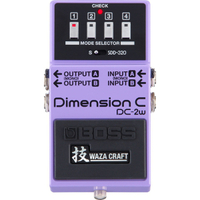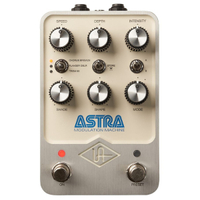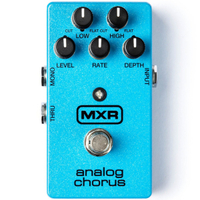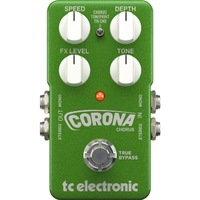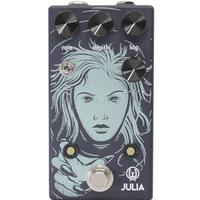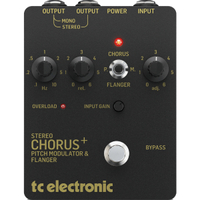Best chorus pedals 2025: Our pick of the top chorus pedals
Chorus is back! Find out why with our top-rated chorus pedals you need to try today
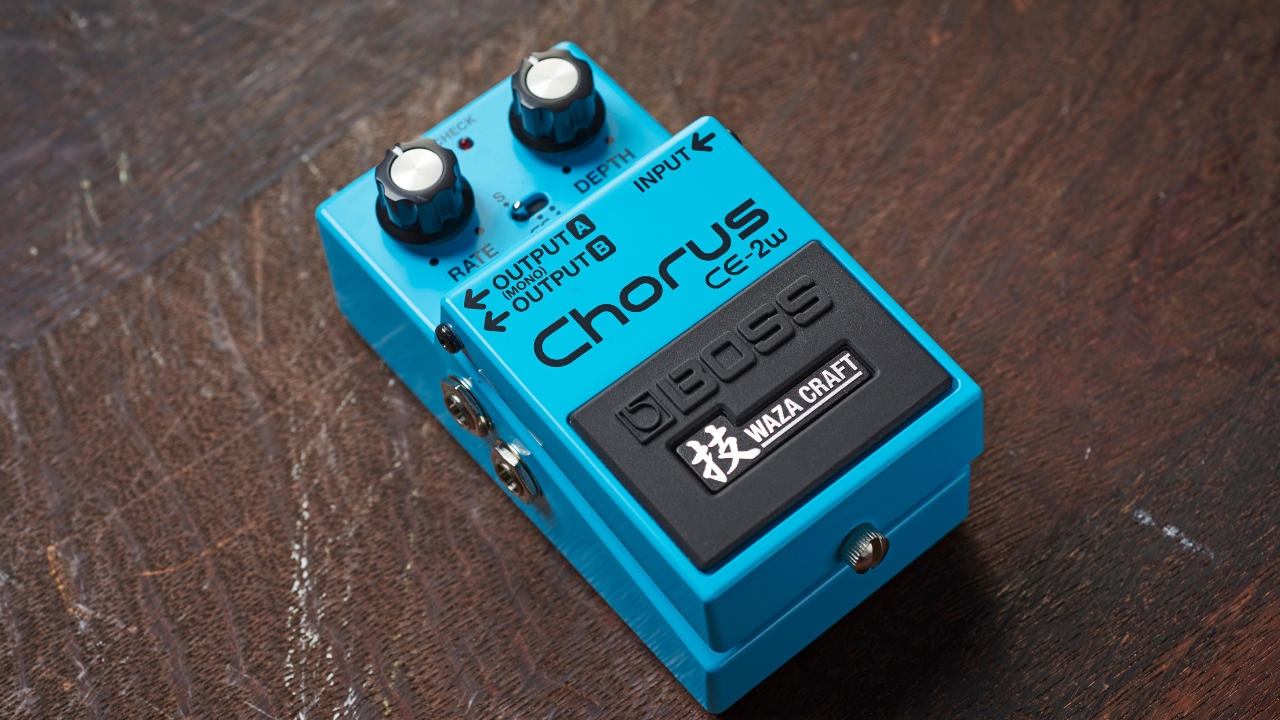
An effect that's gone from uber-popular, to much maligned, before looping back around to being flavour of the moment, the best chorus pedals can offer some unique tones for your pedalboard. I've tested loads of chorus pedals in my time, and I have one on my pedalboard right now, so if you're looking to add this versatile effect to your rig, let me guide you through my top-rated chorus pedals.
Chorus pedals can be used both subtly and in an extreme manner, with the former acting as a subtle thickener for your guitar tone, whilst the latter can make it sound thoroughly sea-sick, and with stereo options give you a super-wide sound. It's a very popular effect that's on a lot of pro player's pedalboards, and I use my chorus pedal quite a lot to lend some flavour to my clean tones in particular.
If you're looking for the ultimate in chorus tone, I'd recommend you pick up the Boss CE-2W Waza Craft Chorus. It covers all the iconic tones with its two modes, is compact enough to not take up too much room, and gives you the option for stereo. If it's a little too pricey for you, then have a look at the TC Electronic 3rd Dimension, which gives you iconic tones for around the £/$50 mark.
If you're new to chorus pedals, we've got a handy how to choose and FAQs section which will give you all the information you need to get started. If you just want to see my top picks, then keep on scrolling...
My top picks
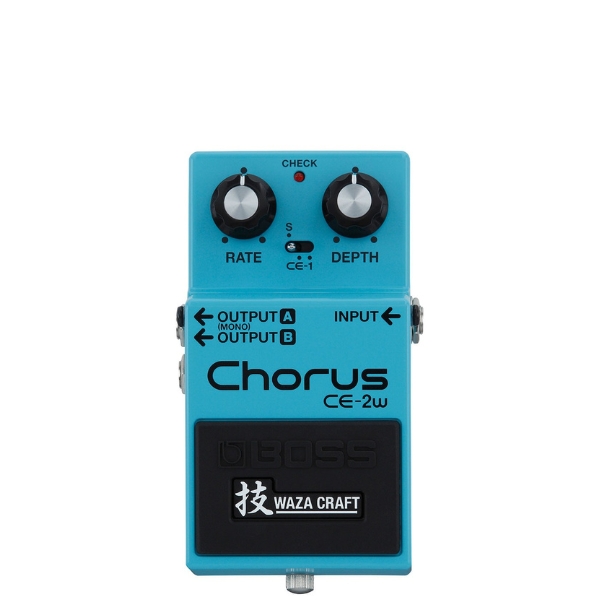
For me, it doesn't get much better than the iconic chorus tones of the Boss CE-2W chorus pedal. With both tones from the original 1976 Chorus Ensemble and the classic CE-1 stompbox, it's the best all-rounder for chorus tones.
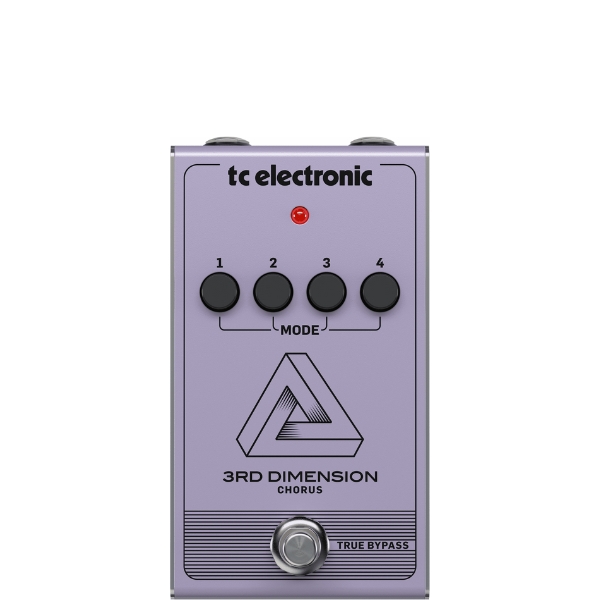
Costing around the £/$50 mark, in my opinion it doesn't come much better than the TC Electronic 3rd Dimension if you want a quality chorus tone without spending loads. Based on the famous Boss DC-2 chorus pedal, it delivers lush tones for less.
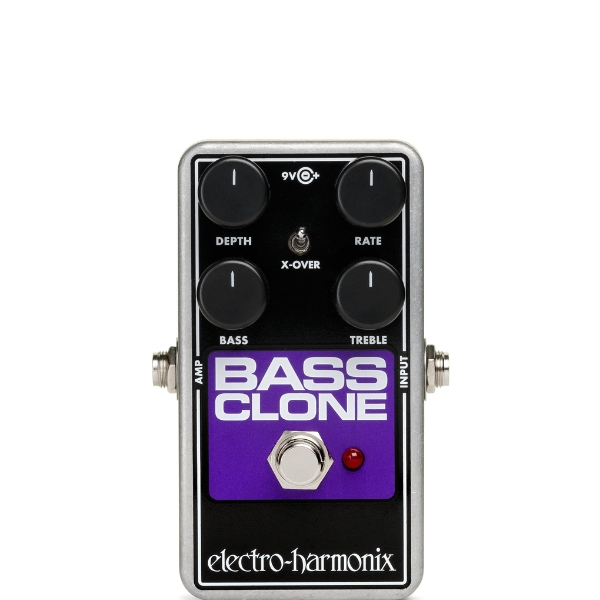
Chorus is one of the most utilised effects on bass guitar, and if you want to add some without losing your tone, I'd highly recommend the Electro-Harmonix Bass Clone. It's specifically designed for the bass guitar, so it won't sap your low-end energy.
Best overall

Specifications
Reasons to buy
Reasons to avoid
✅ Buy if you want an iconic chorus tone: With both the original Chorus Ensemble and CE-1 tones inside, this will have you covered for classic chorus sounds,
❌ Avoid if you don't like traditional tones: If you prefer a more modern-sounding chorus, you'll want to look elsewhere.
Ask any wizened effects buff to name the best chorus pedal of all time, and they'll likely cite the first one ever, Boss's iconic 1976 CE-1 Chorus Ensemble unit, or perhaps its later compact-sized incarnation, the CE-2 Chorus.
It's a savvy move, then, that Boss has combined these two classic effects for the latest addition to its high-end Waza Craft series, while adding a few new features along the way.
A tiny slider switch holds the key to the CE-2W's versatility. On the left is the standard position for smooth CE-2 sounds, but shift it over to the middle and you get the CE-1's definitive swirl, while the right engages its full-on vibrato mode for proper pitch-bending goodness. The sounds are as authentic as can be, too, thanks to an all-analogue circuit, complete with all-important bucket brigade delay chips.

"Despite its all-analogue nature, the CE-2W is remarkably low-noise and doesn't mess with your guitar's core tone, yet retains the three-dimensional nature of Boss's legendary originals."
Read more: Boss CE-2W Waza Craft Chorus review
Best budget
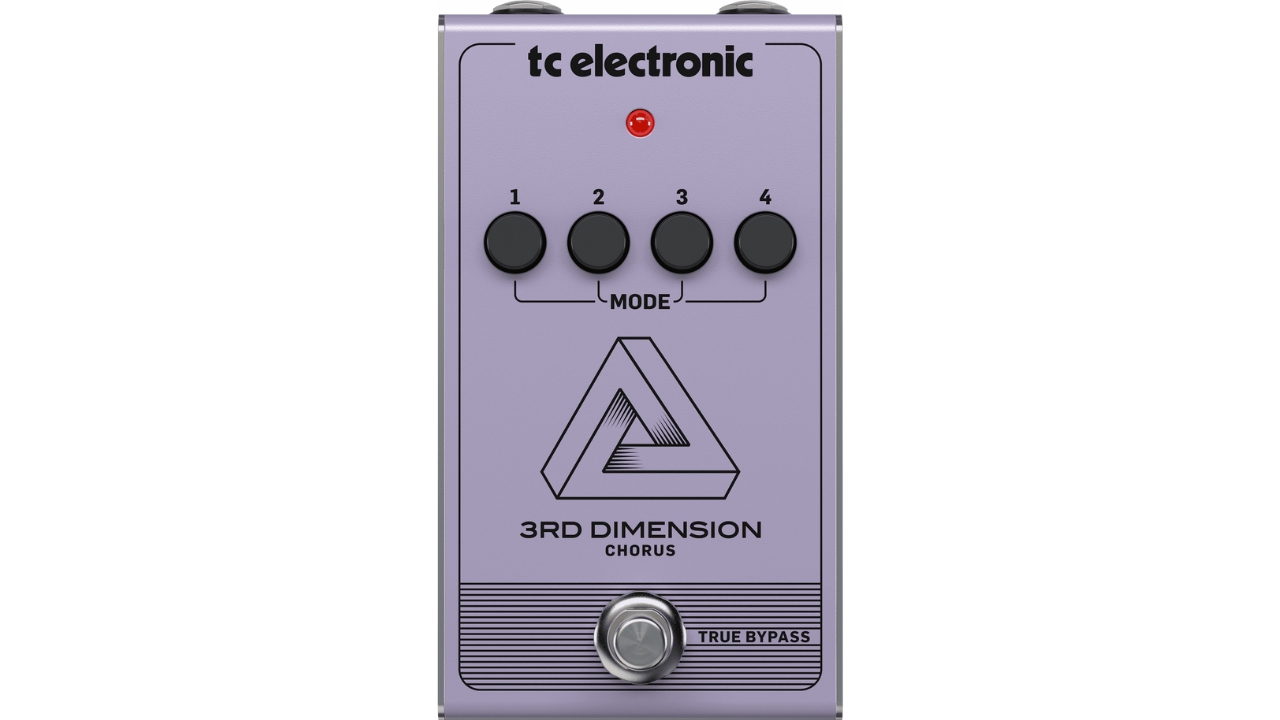
2. TC Electronic 3rd Dimension
Our expert review:
Specifications
Reasons to buy
Reasons to avoid
✅ Buy if you want a cheap chorus pedal: Costing around the £/$50 mark this budget chorus pedal is a great option if you're short of cash.
❌ Avoid if you want intense chorus: Based on the Dimension Chorus it's a bit more subtle than some of the others on this list.
Based upon another classic chorus pedal, the TC Electronic 3rd Dimension goes a different route from the others on this list with four buttons replacing the knobs. It's incredibly good value for money too, so if you're after something on a budget you'll want to check it out.
The original Dimension Chorus also used a four-button layout which might feel unfamiliar if you're used to knobs, but I found that it's actually quite intuitive and makes for easy tone changes as you can select different variations of buttons for your sounds.
It's a more subtle chorus sound than others on this list, although with all four buttons pushed in you can get a quite warbly tone from it. It won't please those who want that really seasick sort of sound though.
All-in-all, at this price there's little you can complain about when it comes to the TC Electronic 3rd Dimension. The tones are great quality, the chassis is nice and robust, and it comes at a price point that will be accessible for most players.
Best for bass
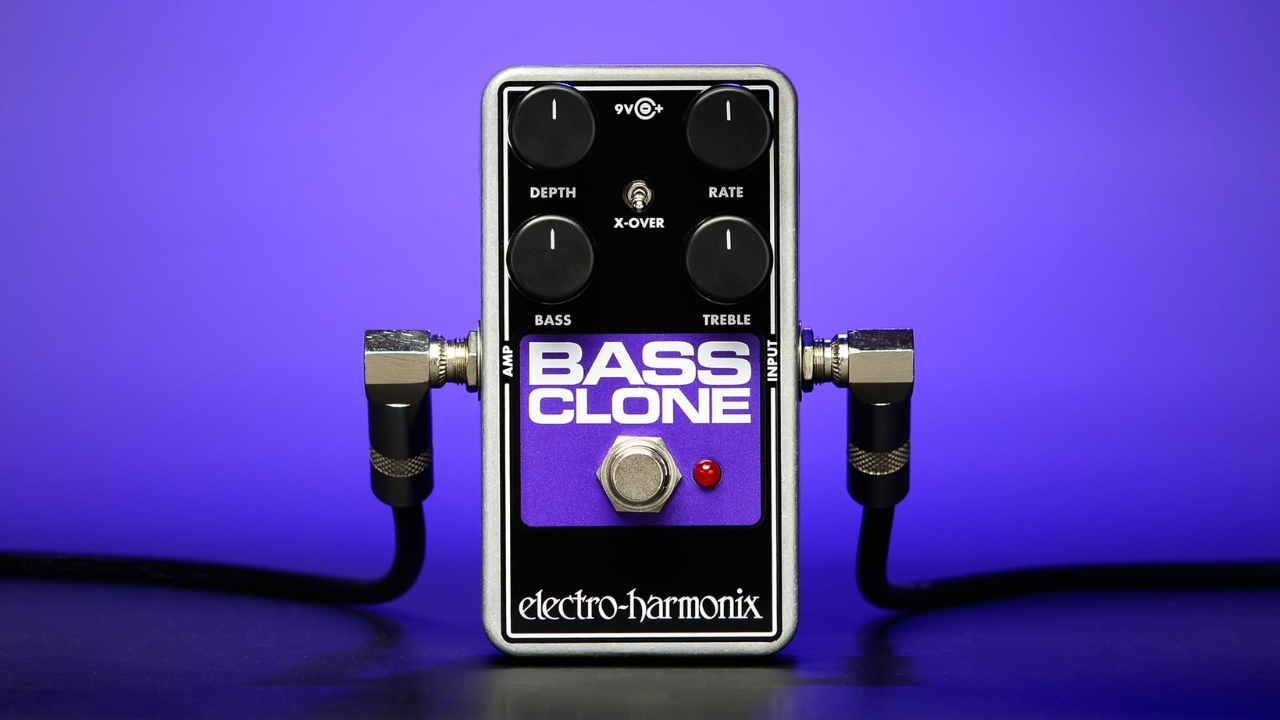
3. Electro-Harmonix Bass Clone
Our expert review:
Specifications
Reasons to buy
Reasons to avoid
✅ Buy if you want a chorus pedal for bass: Specifically designed for bass so it won't suck the life out of your tone, the Bass Clone is my top pick for bass guitarists.
❌ Avoid if you play guitar: If you're not playing bass you'll want to look at those pedals that are more geared towards your instrument.
Being one of the most popular effects used by bass guitarists, it's really imperative to get a chorus that won't suck the low-end out of your sound which can happen when you use a lot of regular chorus pedals on the bass. The Electro-Harmonix Bass Clone is one that won't kill the vibe of your bass, making it my pick for all the bass guitarists out there.
Being able to control the speed and rate of the modulation means you can dial in a huge range of sounds from subtle and slight movement all the way through to seasick warbling tones. It makes a versatile option for a bass 'board, and I love that it's so simple and easy to use.
The secret power of the Bass Clone is the X-Over switch though, which determines whether or not the chorus sound is applied to the low end. With it in the 'up' position the chorus tone doesn't get applied to the low end, which can really help with clarity. Alternatively, if you want to effect the whole signal you can just flick it back down again.
It can get a bit hissy at the treble end of the spectrum when you use higher settings, but this is something that happens with a lot of analogue chorus pedals. You probably won't notice it playing live, but it might hinder its use in the studio depending on your settings.
If you want an easy to use yet flexible chorus pedal for your bass guitar, you won't get much better than the Electro-Harmonix Bass Clone in my opinion.
Best mini
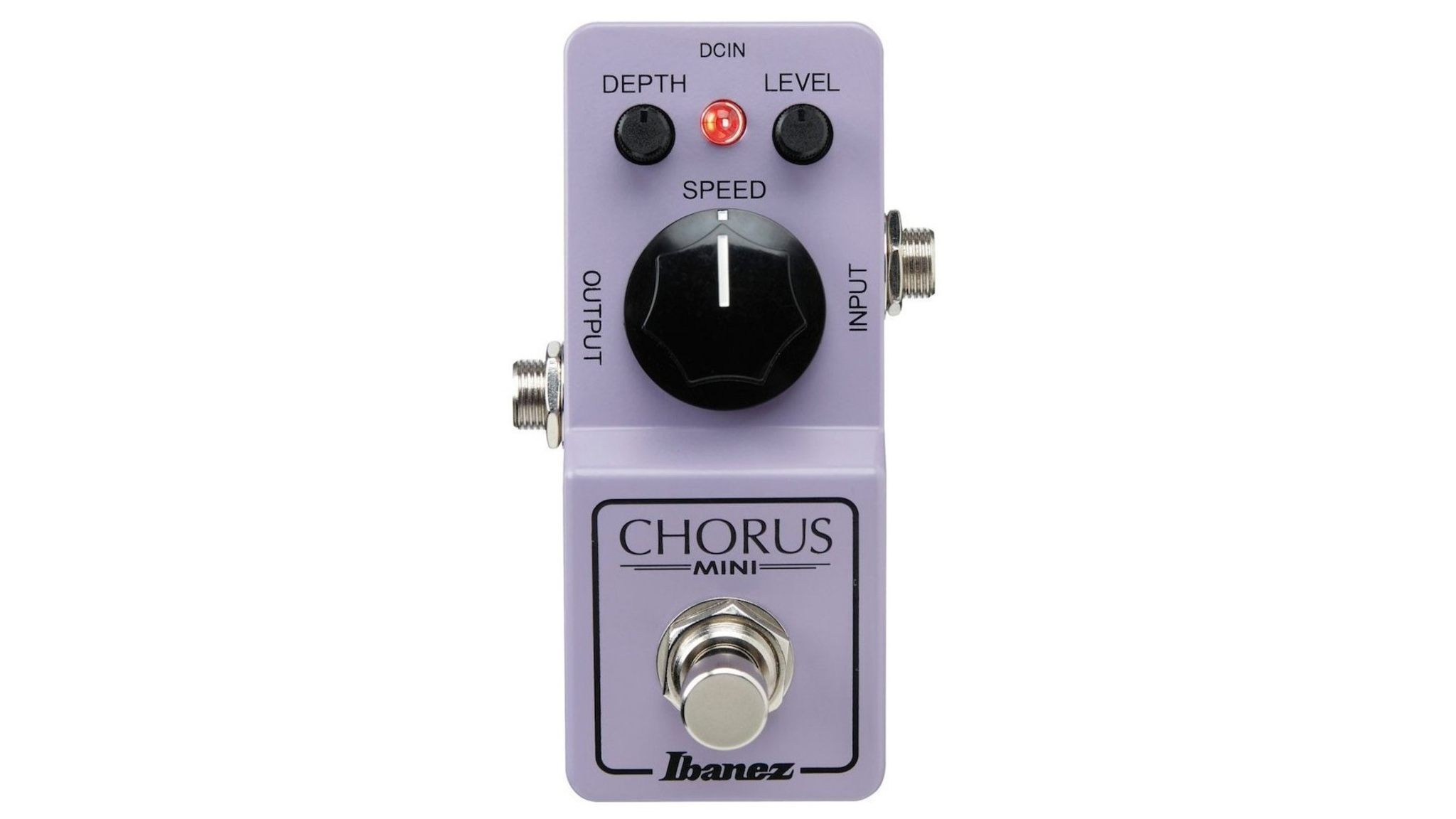
4. Ibanez Chorus Mini
Our expert review:
Specifications
Reasons to buy
Reasons to avoid
✅ Buy if you're short of space: With its rugged mini-chassis, the Ibanez Chorus Mini is perfect for players who have a packed pedalboard but want analogue chorus tones.
❌ Avoid if you want bigger controls: The mini-pedal format does mean you'll face some limitations in terms of controls, namely some teeny-tiny knobs that can be awkward to manipulate.
Where many mini pedals end up going down the pristine Boss CE-2 route, the Chorus Mini takes the denser of a lesser known - but still classic - Ibanez CS9. If you've got a 'board that's already jam-packed full of pedals.
It does that 80s-style chorus that's really thick, making it great for giving your guitar tone a little more girth. The level control means you can dictate how much you want it to affect your signal, whether that's a subtle thickening or vibrato-style wobbling. Utilizing the rate knob you can also get yourself a nice flanger-type tone too.
You can even get Leslie-style rotary sounds from it with certain settings, making it a super versatile option despite the small size. It's a low-budget option, costing around the £/$100 mark and despite the slightly fiddly knobs, I think it's one of the best mini-chorus pedals on the market right now.

"It's a sweet, syrupy chorus that's very '80s (think Prince, Metallica). Still, the level control – a new addition to this mini version – affords extra versatility, with near-vibrato wobbles at higher levels and speeds. At the same time, you can nab a decent flanger approximation down the other end of the rate knob."
Read more: Ibanez Chorus Mini review
Best stereo
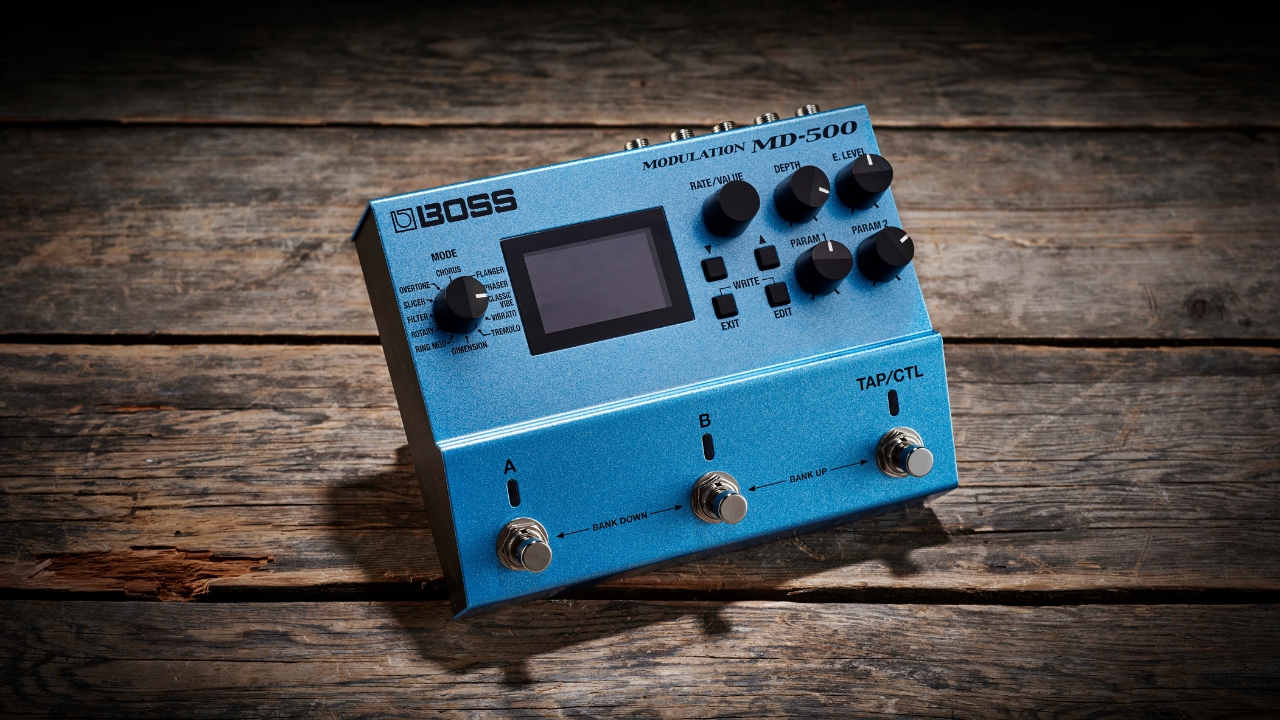
Specifications
Reasons to buy
Reasons to avoid
✅ Buy if you want stereo chorus: Packed full of chorus sounds and offering stereo ins and outs, the MD-500 is perfect if you want extra wide chorus sounds.
❌ Avoid if you value simplicity: There are a lot of options in this pedal so avoid if you don't want to spend time tone tweaking.
With 12 different modes, studio-quality audio, and endless options for patch customisation, the MD-500 is an endgame modelling chorus. If you want to get those super wide chorus sounds with two amps, this is the chorus pedal for you.
Within the chorus mode there's a huge variety of options across four chorus modes, not all of which are even strictly chorus. There's a modern chorus, 'prime', a CE-1 emulation, with a secondary vibrato mode, and a tri-chorus, which has 3 detuning LFOs. Among the options are EQ for each mode, and perhaps most excitingly, pre-delay and waveform options for further tweaking.
Besides its chorus bank, it has a dedicated Dimension mode, which seeks to emulate the Roland SDD-320 Dimension D rack chorus. Obviously, being an emulation, it's never going to be perfect, but compared to the SDD-320 mode on the DC-2W reissue, it's not half bad.
I love that there are so many options available on the MD-500, but I also appreciate it might be a bit too much for some. If you love getting nerdy with your signal chain then you'll appreciate this, but those looking for simplicity might find it all a little too much.

"The single pedal supplying a whole range of modulation needs is a very practical genre but some of them are limited to just one effect at a time. That the MD-500 can do two independent effects separately or combined gives it an edge over the close competition: it’s a powerful machine with a flexibility that’s hard to beat."
Read more: Boss MD-500 review
Best analogue
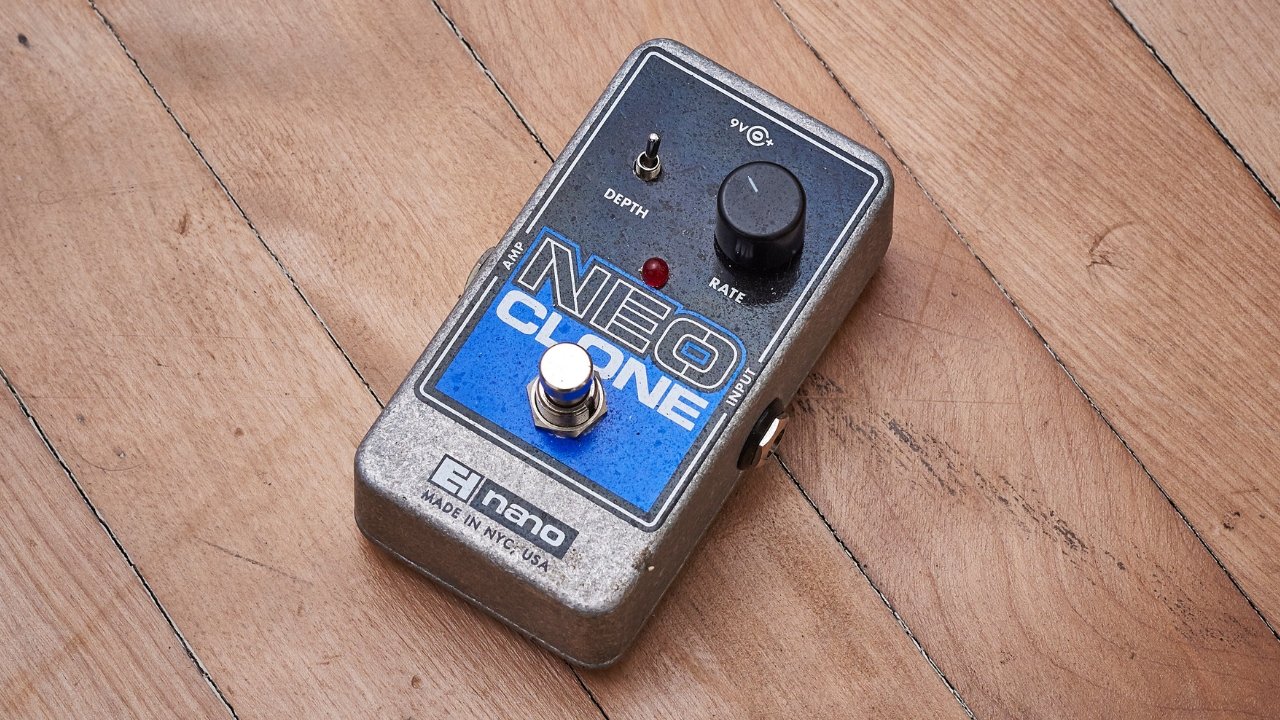
Specifications
Reasons to buy
Reasons to avoid
✅ Buy if you want classic analogue tones: With its Bucket Brigade Circuitry, this is a classic chorus pedal through and through.
❌ Avoid if you want loads of tones: This does one chorus type and does it well, but you might want to look elsewhere if you want options.
Thanks to Kurt Cobain, the Small Clone chorus has long been one of EHX's most revered stompboxes. The Neo Clone employs the same basic circuitry as the Small Clone, and EHX states that the electronics have also been "massaged and tweaked to improve accuracy and offer superior sonic qualities".
Some EHX units have a well-earned reputation as being over-the-top sound generators, but it's possible to obtain more subtle tones. That's certainly the case here – if you set the rate to 10 o'clock with a light depth, any clean tone will reap the benefit.
The heavier depth setting is more in Andy Summers and vintage Alex Lifeson territory, with plenty of warm vintage shimmer on tap. It's as close to the original Small Clone as makes no difference and, best of all, should fit snugly onto your existing pedalboard.

"I authentically recreated the classic Come As You Are modulation with the rate set around 12 o'clock and a heavy depth - increasing the rate just adds to the Soundgarden-style movement without really getting too far out of control. It's as close to the original Small Clone as makes no difference and, best of all, should fit snugly onto your existing pedalboard."
Read more: Electro-Harmonix Neo Clone review
Also consider
Boss DC-2W Dimension C
Stereo | Buffered Bypass | 9V, 65mA
The original Boss Dimension C was a stereo chorus that had the relatively unique distinction of using two parallel analogue BBD paths to create its sound. That lush, '80s chorus is delivered in spades by the DC-2W, while updates have found issues with the original – noise and low output volume – largely mitigated.
★★★★½
Read more: Boss DC-2W Dimension C review
Universal Audio Astra Modulation Machine
Stereo | True or Buffered Bypass | 9V, 400mA
In addition to a mode that models the chorus/vibrato sounds of the original CE-1, there's a flanger/doubler modelled after MXR's rackmount unit, a Phase 90, Fender amp tube-driven tremolo and UA's own Dharma Trem 61 (some are available to download onto the pedal after you register it). They all sound fantastic and I found the Astra delivers a rich selection of classic tones for live work in a covers band but also inspiring recording sounds.
★★★★½
MXR M234 Analog Chorus
Mono | True Bypass | 9V, 13mA
Somewhere between the minimalist Micro Chorus and the larger format Stereo Chorus, MXR's Analog Chorus combines a pedalboard-friendly compactness with the control provided by five knobs. With true analogue bucket brigade technology onboard, juxtaposition of the rate and depth controls gives a wide range of familiar classy chorus tones.
★★★★☆
Read more: MXR M234 Analog Chorus review
TC Electronic Corona Chorus
Stereo | True Bypass | 9V
The Corona delivers a standard chorus effect inspired by the vintage TC Stereo Chorus Flanger plus a Tri Chorus, a variation of the regular chorus that uses three stereo choruses with various offsets for both depth, speed, phase, and chorus delay time to produce what TC describes as a unique, very broad and lush chorus.
★★★★☆
Read more: TC Electronic Corona Chorus review
Walrus Audio Julia V2
Mono | True Bypass | 9V, 100mA
Although the front panel of the Julia suggests a complicated pedal, it's relatively simple. The mix knob allows you to travel from chorus to vibrato territory, and the waveform shape control is intuitive as you like; the main complication is the lag control.
★★★★☆
TC Electronic SCF Gold
Stereo | Buffered bypass | 9V, 150mA
The TC Electronic SCF Gold is a versatile Bucket Brigade Device pedal that combines its excellent chorus mode with equally impressive flanger and pitch modulation modes that I feel are easily worth the asking price here. Especially if you have a stereo rig.
★★★★☆
How to choose
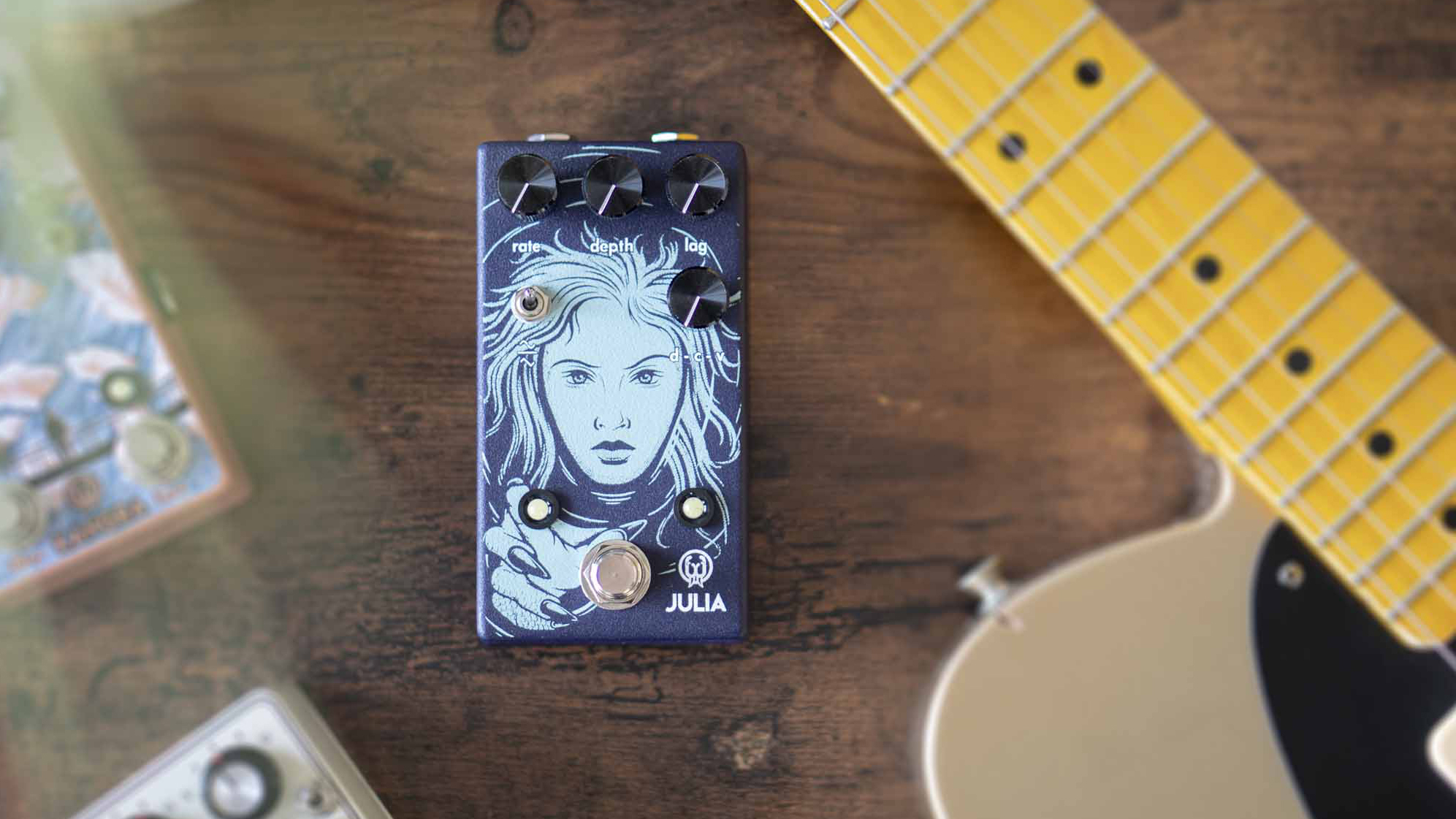
Picking the best chorus pedal for you is largely down to finding one where the timbre and options gel with what you're creatively trying to achieve. Chorused sounds often sound 'bigger' or 'fatter' and various spins on it are used in studio situations for altering the timbre of guitars, creating the impression of double-tracking, or sound-staging.
Chorus uses a delay line to split your guitar signal into a ‘dry’ and a duplicate ‘wet’ signal, then an LFO subtly detunes the wet part. This is then blended back with the dry signal. By increasing the mix of the effect toward fully wet, a chorus typically crosses the line into vibrato, with an even more pronounced detuned pitch effect.
There's a complicating wrinkle, however – chorus is in many respects similar to flanging, except with no feedback control and a longer delay line. Flangers tend to top out at about 25ms, which is where chorus takes over. However, this does mean there's some overlap. The rich chorus tones on the Police's 1979 hit Walking On The Moon are in fact not a chorus, but an Electro-Harmonix Electric Mistress Flanger.
As a chorus is, at heart, a delay effect, many of the early choruses were based around analogue bucket-brigade delay chips, which offered a richer, warmer chorus tone. However, just as tape machines allowed the invention of flanging – where an operator simply ran two machines in parallel and put a finger on one to slow it down – they also allowed for chorus effects, albeit unintentionally.
Due to slight oscillations in motor speed or tape transmission – usually due to maintenance, the age of the tape, or the age of the tape machine, the pitch of sounds played back would change slightly, creating chorus. It's largely for this reason – what's called 'wow and flutter', that tape echoes are so coveted.
Nowadays, most choruses are digital, which carries with it the usual tradeoff of increased flexibility at the expense of often more clinical tones. However, this isn't a given; not only are some digital effects rich and warm, but others emulate vintage units for a specific tone, like the Strymon Deco's tape machine modeling.
FAQs
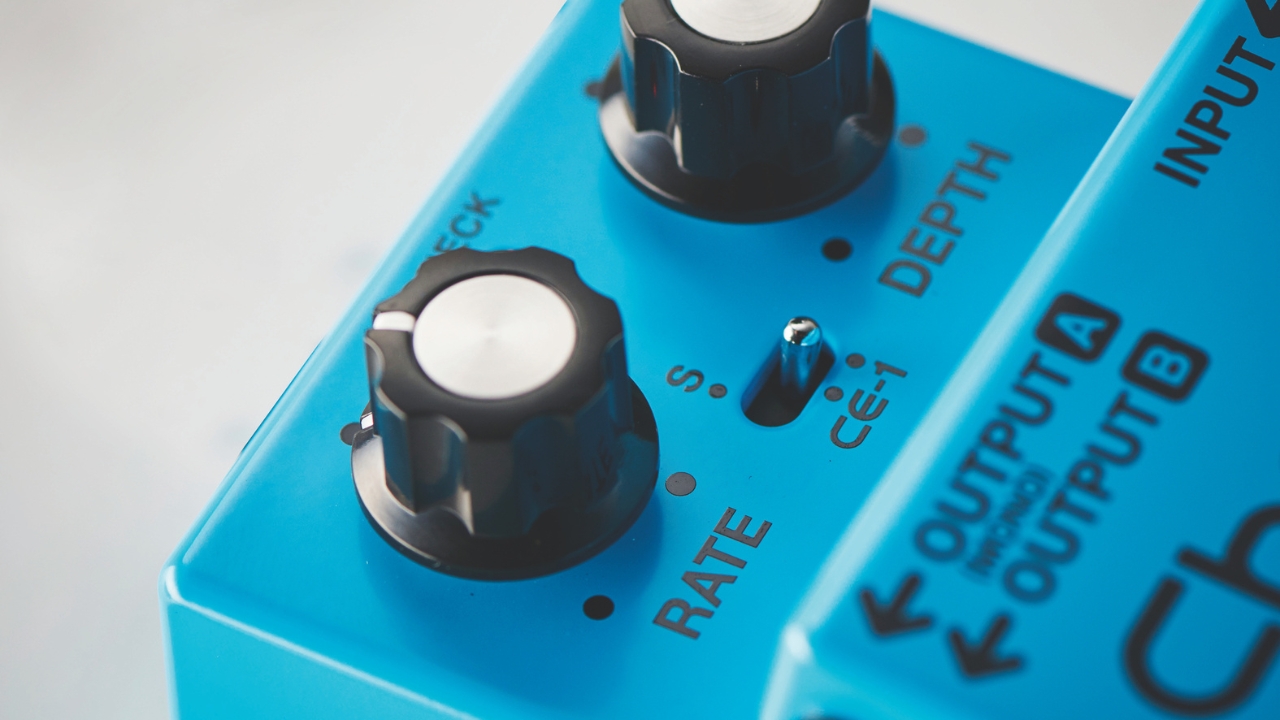
What pedals go well with chorus?
You can put pretty much any pedal you like with chorus, which is what makes it such a popular effect. Whether placing it before your amp with your overdrive pedals or later in your chain with your reverbs and delays, a chorus pedal can add a subtle thickening or a wide warble and play nice with pretty much anything.
What is the point of a chorus pedal?
A chorus pedal essentially simulates the effect of two instruments playing together at once. When used with guitar this can add a really nice thickening of your guitar tone when used at subtle settings, or it can make things sound weird and detuned when used in a more extreme way.
It's a very iconic effect that's been famously used on songs like 'Come As You Are' by Nirvana, 'Walking on the Moon' by The Police, and 'There She Goes' by The La's.
What is the difference between a chorus pedal and phaser?
Both chorus and phaser pedals involve splitting your signal in two, altering them, and then putting them back together again. However, they both achieve this in a slightly different way. A chorus pedal typically splits the signal, detunes one half, and then delays it to create the sound of two instruments playing at once. A phaser splits the signal in two, phase shifts the second signal, and then puts them back together to create the swirling effect.
How we test
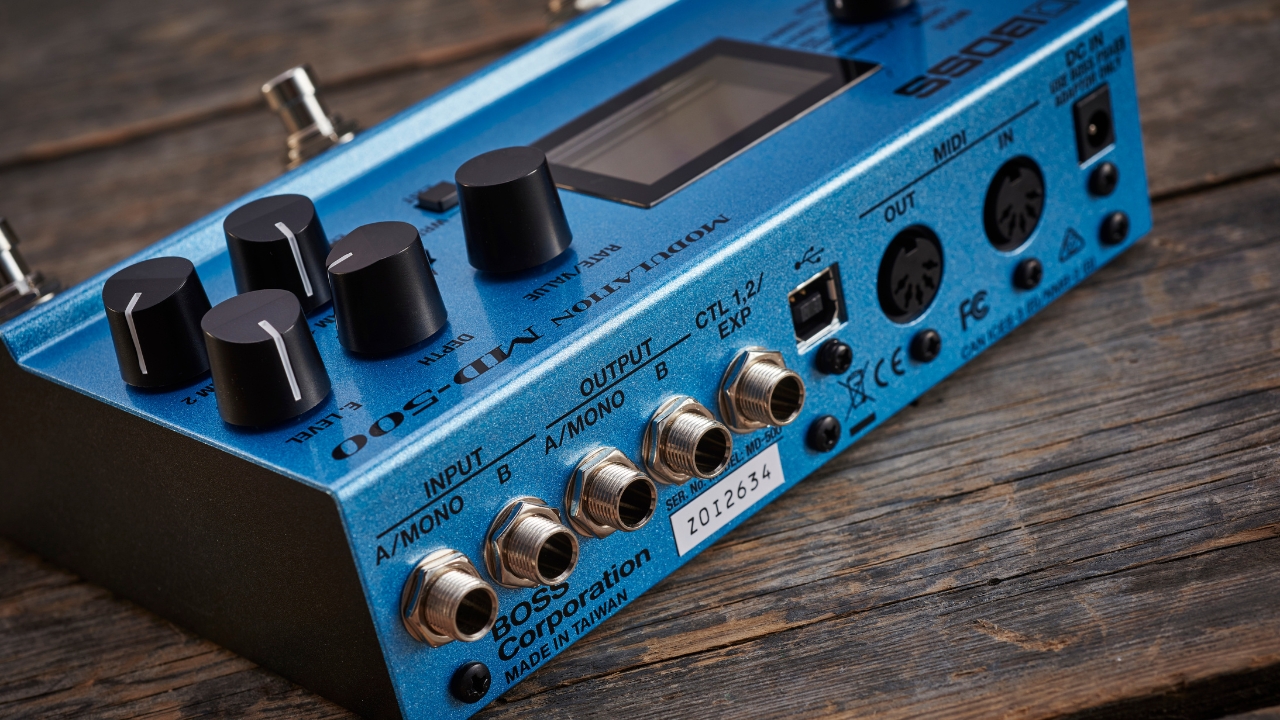
When testing a chorus pedal we like to do four main checks to ensure that it's up to being placed in one of our buyer's guides. These are the same checks we'd do with any kind of pedal, and we always aim to spend at least a couple of weeks with each of the pedals we test, trying them out at home, on stage, in the rehearsal room, and in the studio.
First of all we'll check out the features the pedal has, researching any backstory, and finding relevant pedals to compare it to. Understanding where it sits in the history of guitar is an important part of our reviews, and as we've tested so many pedals over the year it lets us know where about it sits in the spectrum, and who it will be suitable for.
Once this is done we'll do a thorough physical inspection of the instrument. We're looking to see that it's durable enough to withstand regular gigging, and that overall its well put together. We might take it apart to see the insides and determine more about the circuitry, as well as examining all the knobs and buttons to make sure they're ruggedly constructed and attached.
Next, we'll delve into actually using the pedal. This usability test will typically start without the manual so we can determine how easy it is to use, before we dive deeper into any extra settings and modes the pedal might contain. We'll always aim to use it as anyone else would, so this might mean taking it to practice or a gig, as well as recording with it to see how it fits into any setup.
Finally, and probably most importantly, we'll look at the sound. Using our previous experience we'll judge the sound in an unbiased way, aiming to inform our readers how it sounds without letting our own tastes cloud any judgement. To make sure we're doing this in a non-biased way, we'll also grab a sound demo of the pedal in question in order to relay that sound back to our readers.
Find out more about how we test music gear and services at MusicRadar.
Related buyer's guides
MusicRadar's got your back
- Our pick of the best distortion pedals for guitarists
- Best fuzz pedals: put some extra dirt in your tone
- The best delay pedals from Boss, Strymon, EHX and more
- On a tight budget? Here are the best cheap guitar pedals
- Power up with the best pedalboard power supplies
- The best pedalboards for getting your effects in order
Get the MusicRadar Newsletter
Want all the hottest music and gear news, reviews, deals, features and more, direct to your inbox? Sign up here.
Alex Lynham is a gear obsessive who's been collecting and building modern and vintage equipment since he got his first Saturday job. Besides reviewing countless pedals for Total Guitar, he's written guides on how to build your first pedal, how to build a tube amp from a kit, and briefly went viral when he released a glitch delay pedal, the Atom Smasher.
- Matt McCrackenJunior Deals Writer
- Rob LaingReviews Editor, GuitarWorld.com and MusicRadar guitars
“A fully playable electro-mechanical synth voice that tracks the pitch of your playing in real time”: Gamechanger Audio unveils the Motor Pedal – a real synth pedal with a “multi-modal gas pedal”
“Instead of labouring over a perfect recreation, we decided to make an expanded counterpart”: Chase Bliss teams up with Mike Piera for Analog Man collab based on the legendary King Of Tone
